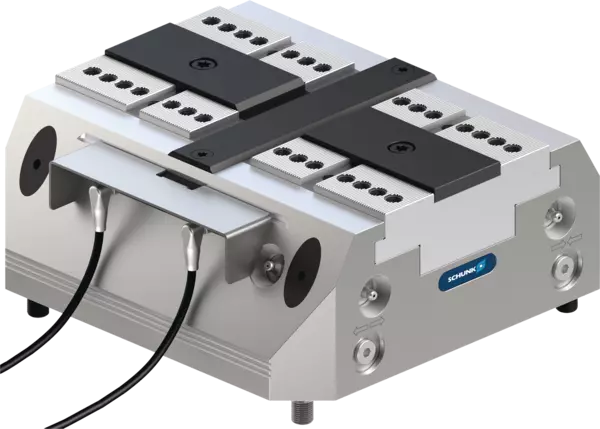In modern workshops and industrial machining environments, clamping solutions play a pivotal role in ensuring accuracy, safety, and efficiency. Whether you are involved in precision machining, fabrication, woodworking, or assembly tasks, having the right type of vise can significantly affect your workflow and final product quality. Two popular options among professionals are the Adjustable Vise and the Pneumatic Vice. Both have their distinct advantages, but choosing the right one depends heavily on your application needs, operational scale, and budget.
This article explores the features, benefits, limitations, and ideal use cases of both the Adjustable Vise and the Pneumatic Vice, helping you make an informed decision for your workshop or industrial operation.
Understanding the Adjustable Vise
An Adjustable Vise is a versatile clamping tool that allows the operator to modify the jaw width manually to accommodate various sizes and shapes of workpieces. Commonly used in metalworking, woodworking, and DIY workshops, adjustable vises are appreciated for their simplicity and reliability.
Key Features:
- Manually operated: The operator adjusts the vise using a screw or lever mechanism.
- Flexible jaw width: Suitable for handling a variety of object sizes.
- Durable construction: Typically made from cast iron or steel for long-term use.
- Portable and affordable: No need for external power or air supply.
Advantages:
- Ideal for low to medium-volume tasks.
- Highly reliable and easy to maintain.
- Allows for precise control during clamping and adjustments.
- Widely available in multiple sizes and formats.
Limitations:
- Requires manual effort and time to adjust.
- May not be suitable for high-speed or repetitive production environments.
- Less consistent clamping force compared to automated options.
Understanding the Pneumatic Vice
A Pneumatic Vice is an air-powered clamping device designed for high-efficiency operations. It uses compressed air to open and close the jaws, providing consistent and rapid clamping with minimal human input. Pneumatic vices are widely used in automated production lines, CNC machining centers, and environments where speed and precision are crucial.
Key Features:
- Air-powered mechanism: Uses pneumatic pressure for fast actuation.
- High clamping force: Delivers uniform and repeatable pressure.
- Automation-ready: Easily integrates into robotic or CNC systems.
- Reduced operator fatigue: Minimal manual involvement.
Advantages:
- Increases production speed significantly.
- Ensures consistent clamping across multiple cycles.
- Ideal for high-volume and repetitive tasks.
- Enhances safety by minimizing manual interaction.
Limitations:
- Requires a compressed air system for operation.
- Higher initial cost compared to manual vises.
- Requires periodic maintenance of pneumatic components.
Choosing the Right Tool for Your Application
Choose an Adjustable Vise if:
- You are working in a small to medium-sized workshop.
- Your projects involve frequent changes in workpiece size or shape.
- You prefer a cost-effective and low-maintenance clamping solution.
- You prioritize control and flexibility over speed.
Choose a Pneumatic Vice if:
- Your operations require high-volume, repetitive clamping.
- You aim to integrate automation into your production line.
- You need consistent clamping force and improved productivity.
- You have access to a reliable compressed air supply.
The decision ultimately comes down to your workflow requirements. For artisanal work, prototyping, or general-purpose machining, the Adjustable Vise offers unmatched versatility and simplicity. On the other hand, for advanced manufacturing and precision automation, the Pneumatic Vice provides speed, consistency, and integration capabilities that manual options cannot match.
Read also: Enhancing Efficiency and Productivity: Exploring Automatic and Pneumatic Tool Changers
Industry Use Cases
Metalworking and CNC Machining
Pneumatic vices are commonly used in CNC machining centers where precision, speed, and automation are critical. These vises can be programmed to open and close automatically, drastically reducing cycle times and operator involvement.
Woodworking and Fabrication
An adjustable vise is often the preferred choice in woodworking shops and general fabrication environments. Its ability to adapt quickly to different workpiece sizes makes it an excellent all-purpose tool.
Assembly Lines
In automated assembly operations, pneumatic vices ensure fast and repeatable clamping, improving throughput while maintaining quality.
Maintenance and Repair Shops
Adjustable vises remain the go-to choice in maintenance shops where versatility is key. They’re ideal for holding a wide variety of parts and components during inspection, repair, or reassembly.
Conclusion
Both the Adjustable Vise and the Pneumatic Vice offer unique benefits and cater to different types of users and environments. When selecting the right vise, it’s important to consider factors such as the volume of your operation, the types of materials and parts you work with, and your long-term efficiency goals.
For professionals and industries seeking innovative, durable, and precision-engineered clamping solutions, Schunk remains a trusted name worldwide. As a leader in automation technology and workholding systems, Schunk offers a wide range of high-performance Pneumatic Vices and advanced Adjustable Vises designed to meet the evolving demands of modern manufacturing. With Schunk’s cutting-edge clamping solutions, you can enhance productivity, ensure safety, and achieve optimal performance in every application.

